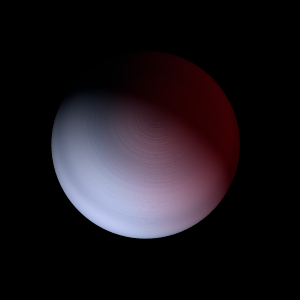|
|
Space Astro
|
Info for exoplanet "Hobe-c"
| Scientific (actual) data |
|---|
| Name | HD 16175 b |
| Planet status | Confirmed |
| Mass sini | 4.77 |
| Orbital period | 995.4 |
| Semi major axis | 2.148 |
| Orbit eccentricity | 0.637 |
| Angular distance | 0.035117 |
| Discovered | 2007 |
| Updated | 2016-04-29 |
| Omega | 221.5 |
| Tperi | 2455800 |
| K | 103.5 |
| Publication | Published in a refereed paper |
| Detection type | Radial Velocity |
| Mass measurement type | Radial Velocity |
| Star name | HD 16175 |
| Right ascension | 39.26° |
| Declination | 42.06° |
| Mag v | 7.28 |
| Mag j | 6.17 |
| Mag h | 5.92 |
| Mag k | 5.85 |
| Star distance | 59.8 |
| Star metallicity | 0.37 |
| Star mass | 1.35 |
| Star radius | 1.87 |
| Star sp type | G0 |
| Star age | 5.3 |
| Star temperature | 6022 |
| Wikipedia article | HD 16175 b |
Back
| |
| Fictional info (?) |
|---|
| Suggested name | Hobe-c |
| Planet type | Cold planet |
|
One of this planet's harsh moons is mostly dangerous because of the aggressive advanced plants known as "Rohesu Nona". They feed on the ground by consuming something called Iroten Oc. Most of them are closely related to the Nivuf Ole and have 3 legs and vary in size from 3 to 6 mm. The Rohesu Nona are known to reproduce at temperatures from 150 to 220°C and to some degree stormy weather which is rare on this planet. |
| Estimated population | 1700 |
| Atmosphere | Methane | 81% |
| Water | 17% |
| Oxygen | 1.6% |
| Carbon dioxide | 0% |
| Atmospheric pressure | 4 bar |
 |
| Moon | Utunawe Bovuru | Huge almost round ice moon |
| Google search for Hobe-c |
|
Website by Joachim Michaelis
|
|
|
|